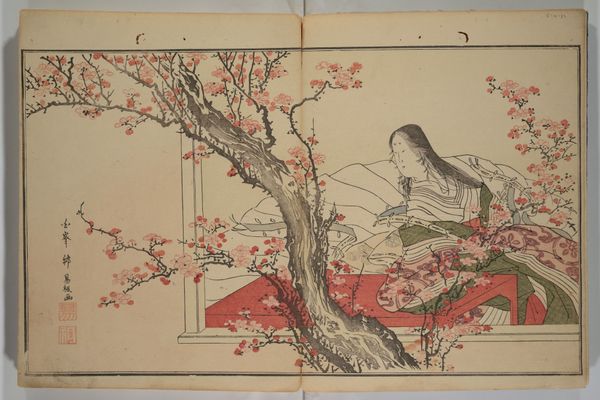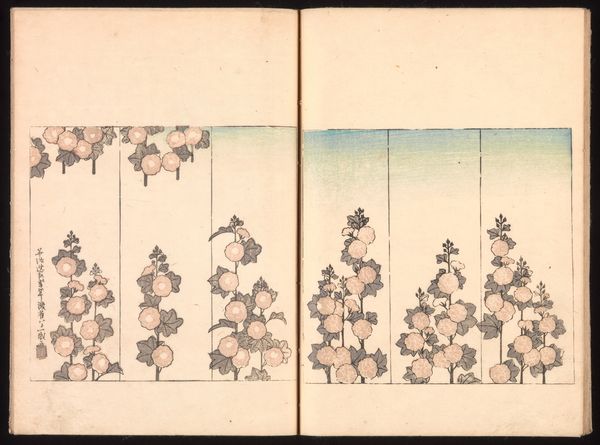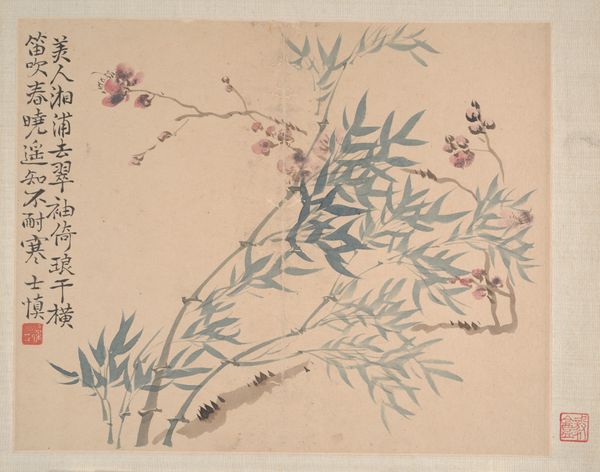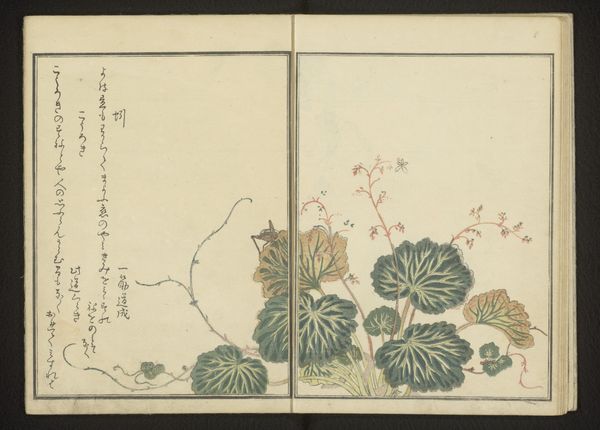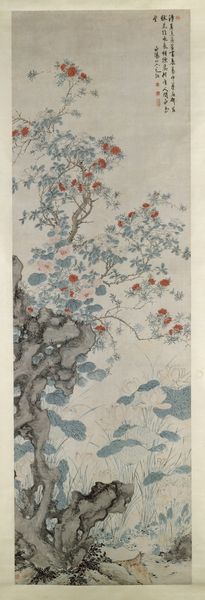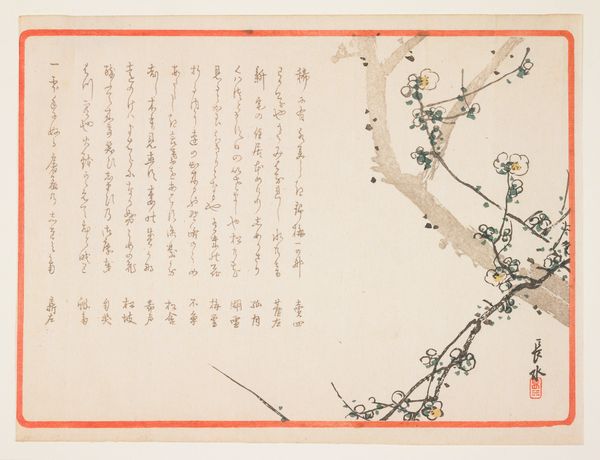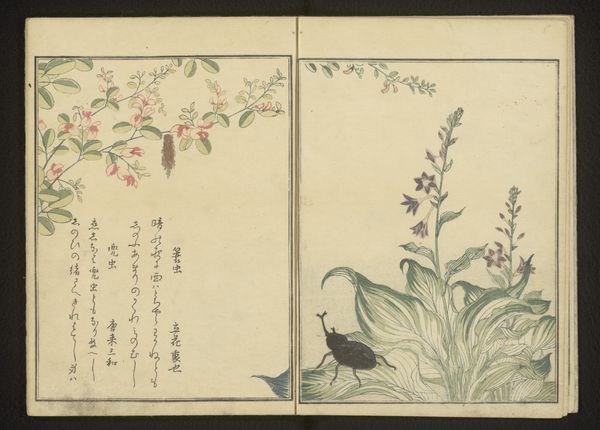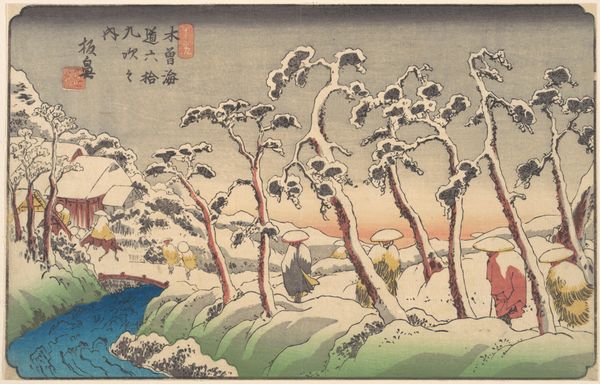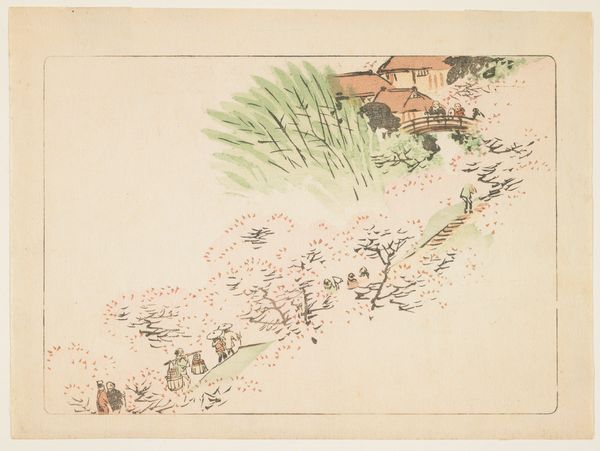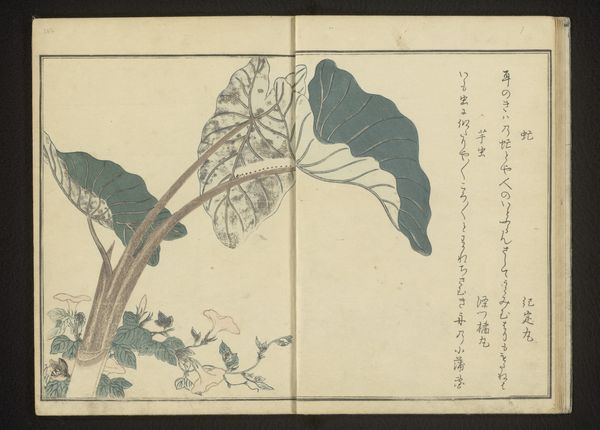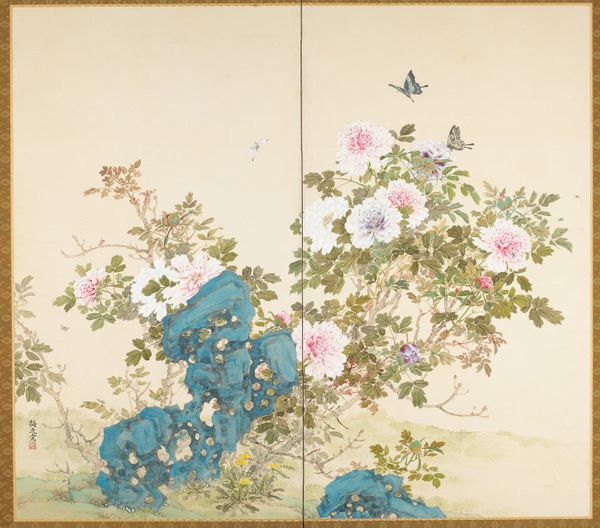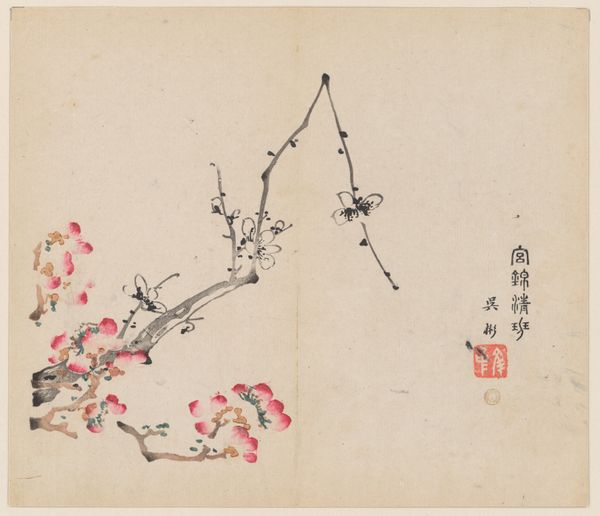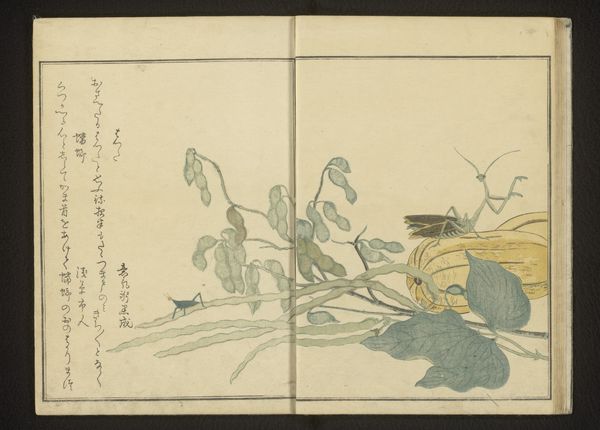
drawing, print, paper, ink, woodblock-print
#
tree
#
drawing
#
pen drawing
# print
#
book
#
asian-art
#
landscape
#
flower
#
ukiyo-e
#
japan
#
paper
#
ink
#
woodblock-print
Dimensions: Image: 9 5/8 x 6 7/8 x 1/4 in. (24.4 x 17.5 x 0.7 cm) Overall (Open): 9 5/8 x 13 in. (24.4 x 33 cm)
Copyright: Public Domain
Editor: So, this is "Ink Traces of Kenzan" by Sakai Hōitsu, made in 1823. It's an ink and color woodblock print on paper, presented as a book. The muted palette and simple composition create this feeling of quiet contemplation for me. How do you interpret this work? Curator: That quietness, I think, belies the powerful artistic dialogue happening here. Sakai Hōitsu was a key figure in the Rinpa school revival, but also deeply influenced by the work of Kenzan, a potter and painter from a century earlier. Hōitsu's paying homage, but through the lens of his own social and artistic moment. Look at how he simplifies the natural world, stripping it down to near abstraction. Why do you think he chose to focus on Kenzan specifically? Editor: Maybe because Kenzan wasn’t just an artist; he was also a craftsman, blurring those boundaries. And Hōitsu, by referencing him, comments on the art world of his own time, perhaps critiquing the hierarchy within it? Curator: Exactly! Think about the social stratification of Edo-period Japan. Kenzan, despite his talent, would have occupied a different social sphere than a Kano-school painter, for example. Hōitsu is making a statement about artistic value, potentially democratizing art by celebrating Kenzan’s more accessible aesthetic. What does the choice of subject matter – blossoming trees – contribute? Editor: Spring! Maybe it's about rebirth, or even artistic re-evaluation? A commentary on cultural identity as much as nature. Curator: Precisely. This "Ink Traces" becomes less about simple beauty and more about the social and cultural forces shaping artistic expression. It uses the past to challenge the present. Editor: Wow, I hadn't considered the socio-political layers. Seeing it as a conversation across time, critiquing artistic hierarchies, that gives it so much more depth. Curator: It's a testament to how art can simultaneously celebrate tradition and agitate for change.
Comments
No comments
Be the first to comment and join the conversation on the ultimate creative platform.
